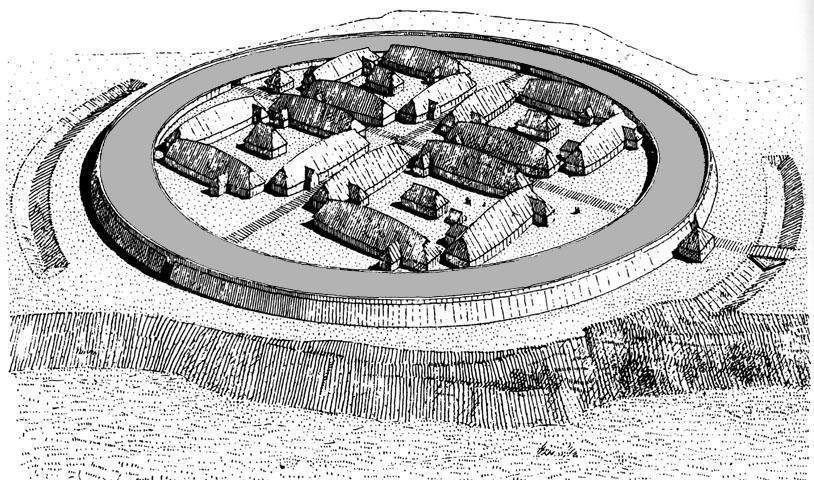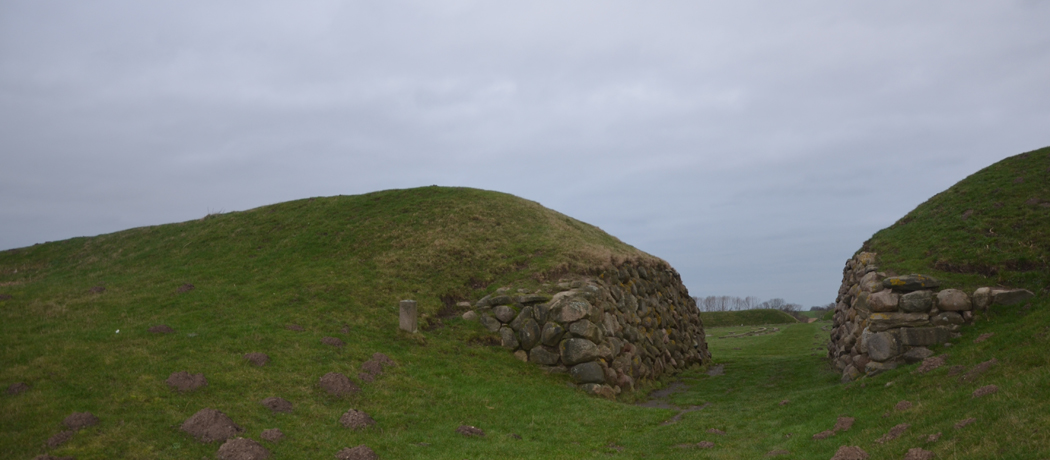Judi Lynn
Judi Lynn's JournalPlane crashes in Havana, Cuba, with 104 passengers on board
CBS/AP May 18, 2018, 2:37 PM
HAVANA -- A Cuban airliner with 104 passengers on board plummeted into a yuca field just after takeoff from Havana's international airport on Friday. There was no immediate word on casualties.
Officials said the plane was headed to the eastern city of Holguin when it crashed a short distance from the end of the runway on the southern outskirts of Havana. Witnesses said they saw a thick column of smoke near the airport.
. . .
The plane lay in a field of yuca-root plants and appeared heavily damaged and burnt. Firefighters were trying to extinguish its smoldering remains. Government officials including President Miguel Diaz-Canel rushed to the site, along with a large number of emergency medical workers. Residents of the rural area said they had seen some survivors being taken away in ambulances.
. . .
"Among the difficulties created by the U.S. trade embargo is our inability to acquire latest-generation aircraft with technology capable of guaranteeing the stability of aerial operations," Hernandez said. "Another factor is obtaining part for Cubana's aircraft."
More:
https://www.cbsnews.com/news/plane-crash-havana-cuba-today-2018-05-18/
Is Colombia's justice system too weak to try the powerful Uribe?
by Adriaan Alsema May 17, 2018
Colombia’s Supreme Court has “abundant” evidence to jail ex-president Alvaro Uribe on witness tampering charges, but the country’s justice system may be too weak to stand up to the powerful politician.
The court has been gathering evidence to support witness tampering charges since February. Since then, one witness against Uribe has been assassinated and two others survived assassination attempts.
The former president is being investigated for “conspiracy, homicide and other” crimes, according to a court order urging increased protection of witnesses against the far-right politician.
Uribe, who rose to prominence in the shadow of Pablo Escobar‘s Medellin Cartel, has been accused of forming death squads as well as dozens of other crimes.
More:
https://colombiareports.com/is-colombias-justice-system-too-weak-to-try-the-powerful-uribe/
Making Development Anthropology More Public: A Study of Displacement and Resettlement by the World B
MAY 16, 2018
by KATALINA KHOURY
Development anthropologists embody a niche existence that is not always easy to navigate. There are naysayers and antagonists to the discipline on all sides of the political field; the hegemonic scientific and economic communities overwhelmingly discount the value of social science and the knowledge it generates; and policymakers often do not prioritize development issues. Development anthropologists have not only had to learn and adopt much of the language, presumptions, and social constructs of its audiences and interlocutors, but have also had to make problematic compromises working with a broken system in order to make small advancements in society. In other words, challenging the prevailing paradigm of development work is an “up-hill battle.” This struggle to impart positive social change from the unique perspective of and position as a development anthropologist is heightened by the fact that institutions and people with socio-economic power (in academia, within development agencies, Governments, etc.) disagree about what actions and policies are ethical, would enable human progress, and are practical. In addition, those with socio-economic power advance their own ideologies of what these three conditions entail and mean, so that they continue to profit economically, or to maintain a position of dominance.
But, what are these elusive institutions and who are these people with socio-economic power? In 1972, anthropologist, Laura Nader, popularized the term “studying up,” which pushed the discipline to reinvent itself. No longer ought the subject(s) of anthropological inquiry and study be the exotic, the paternalistically called “primitives,” and the powerless; instead, anthropologists were to study the familiar and the powerful. Institutions, people, and structuresof power became the subject(s) of a newly developing form of cultural anthropology: applied, or public, anthropology. This sub-discipline rejects anthropology’s apolitical history and futile attempt at objectivity, for a militantly political praxis. The point of anthropological work is no longer merely to study culture and human development, but to change it…for the sake of equity, human rights, and informed human progress. Ethnography, as an empirical science, is therefore used to investigate nodes and structures of power and what can be done to improve equity between individuals in terms of livelihood standards (e.g., health, access to healthcare, food security, housing, income, etc.).
Development anthropology can be a taboo subject, because outsiders to the discipline are not aware of this turn in the discipline’s history and its newfound objective and purpose. Even some anthropologists are weary of development anthropology, because they do not understand and trust its strategies and tactics. They accuse its affiliates of “selling out,” if you will, of engaging with a broken system that continues to serve those already with socio-economic power and of reestablishing the exploitative anthropological practices of the not-so-distant past. Theoretically, the existing literature on development-caused forced displacement and resettlement(DFDR), for example, has extensively posited the question, “Development for Whom?” (see Mahapatra 1991), which reevaluates who actually profits, and who disproportionally suffers, from development projects; however, in practice, development scholars have only their intellectual weapons with which they can arm themselves to convince those with socio-economic power to relinquish it for the sake of equity and human rights.
Development scholars have indeed had to make complex choices, with dire implications, for the limited societal advancements that they have achieved. This is because despite the “lessons learned” and advocated by development scholars, which emphasize risk assessment and prevention (see Cernea 1997), many development projects cause the involuntary displacement and resettlement of indigenous people. Development projects furthermore cause “new poverty,” primarily by externalizing the costs of DFDR on those uprooted (see Chen 2018). For example, development practitioners widely assert that restoring people to pre-displacement livelihood levels via compensation is a sufficient goal. However, if a development project in question had not existed, the displaced and resettled population would have developed itself to a level much significantly higher on its own during the 8-9 years of average project preparation and implementation.
More:
https://www.counterpunch.org/2018/05/16/making-development-anthropology-more-public-a-study-of-displacement-and-resettlement-by-the-world-bank/
"The Making of a Massacre" Explores the D.E.A.'s Role in a Mexican Tragedy
By Sarah LarsonMay 15, 2018
The Making of a Massacre,” a new investigative podcast from Audible and ProPublica, is a two-hour dramatic exploration of a 2011 massacre in Allende, Mexico, reported and narrated by Ginger Thompson. “There’s no missing the signs that something unspeakable happened in Allende,” she says in the first episode. “People were murdered here. Gunmen from one of the most violent drug-trafficking organizations in the world swept through this little town like a flash flood.” We hear a translated account: “They broke into houses. They looted them and burned them. Afterward, they kidnapped the people who lived in those houses and took them to a ranch just outside of Allende.” Dozens were killed and their bodies were burned. Thompson, a Pulitzer Prize winner, is an investigative reporter at ProPublica and a former Mexico City bureau chief for the Times; she grew up on the border and has been writing about Mexico for decades. Cartel-related massacres are “mind-numbingly common,” she says. But this story is different: this massacre, she learns, had been set off by the United States. “It’s a story that’s never been told before,” Thompson tells us. “And it starts here.”
This is a classic podcast beginning—surprising, vivid, urgent, portending lessons about human folly and government error. We’re eager to hear the rest. Then the podcast proceeds in a way that alternately fulfills our expectations and unsettles them, because of the ways in which it dramatizes the content. In the course of its five ambitious episodes, “Making a Massacre” employs both NPR-type narrative audio and a dramatic style that evokes Hollywood: the investigative reporting is dramatized not just with music and sound design but with performances by the film and TV actors Cheech Marin, Danny Trejo, Alana de la Garza, Clifton Collins, Jr., and Snow Tha Product, who deliver interviewees’ words, translated from the Spanish. Trejo also narrates the episodes’ titles—“Chapter 1: The Takeover”—with a husky-voiced gravitas that suggests a horror-movie trailer. Then we hear friendly ranchera music, horses’ hooves, and an introduction to Allende before the massacre, and we’re back in the familiar genre of narrative nonfiction, getting to know our setting. Throughout, the tone switches back and forth, sometimes easily, sometimes less so.
Allende is a ranching town of twenty-three thousand people in the state of Coahuila, a forty-minute drive from Eagle Pass, Texas; it’s home to farmers, teachers, professionals with large houses. It has an annual equestrian parade and rodeo. Thompson narrates in a kindly tone that sounds a bit slowed down for our benefit, and she takes a tour of Allende with the town’s former property assessor, a beekeeper who rents his bees out to melon farmers. He takes her on what he calls, with a nervous laugh, a “narco tour.” They pass dozens of ruined houses, some mini-mansions. “Whatever walls were left standing had holes big enough to shoot basketballs through them,” Thompson says. The beekeeper is willing to drive by but not to stop. “It was as if he was afraid the people who had knocked the houses down seven years ago were still watching,” she says.
The people responsible are the Zetas, a powerful drug-smuggling cartel. Before the Zetas, there was smuggling in Allende—but the local kingpin respected society and society respected him, and life proceeded mostly peacefully. Then he was murdered. The Zetas, led by two brothers, Miguel and Omar Treviño, known as Forty and Forty-two, both moved to Allende and quickly established dominance. The Zetas were known for their flouting of norms and for their spectacular violence—beheadings, dissolving bodies in acid—and ambition: they wanted to rule not just the drug trade but the country. (Both brothers are now in prison.) “The Making of a Massacre” deftly illustrates how the Zetas took power: through violence; by bribing and intimidating government agencies; and, insidiously, by establishing personal ties. An Allende veterinarian memorably describes agreeing to provide veterinary care to a dog belonging to the young son of a cartel member. Soon, locals and cartel are intertwined. When the D.E.A. gets coveted intelligence on the Zetas through cartel operatives and makes a “deadly miscalculation”—sharing the information with Mexican authorities—shocking cruelty ensues. Allende’s townspeople, many unrelated to the drug trade, are its victims. The massacre, its aftermath, and its implications are examined in the second half of the series.
More:
https://www.newyorker.com/culture/podcast-dept/the-making-of-a-massacre-explores-the-deas-role-in-a-mexican-tragedy
Commentary: 'Mexico First' frontrunner uses Trump playbook in crunch election
MAY 16, 2018 / 12:34 PM / UPDATED 3 HOURS AGO
Andres Martinez.
8 MIN READ
It’s crunch time for Mexico, where the course of the next two months will determine whether the country turns its back on a generation-long project of opening its economy to the world and its political system to the winds of democratic change. The decision ultimately rests with Mexican voters — and, to some extent, with U.S. President Donald Trump.
On July 1, Mexicans will elect a new president. Much like American voters in 2016, they are eager to “drain the swamp.” And Mexico indeed may end up electing a rather swampy candidate who promises to do so.
Andrés Manuel López Obrador, the populist former mayor of Mexico City and twice-defeated presidential candidate, has a comfortable lead in the polls. The prospect of his victory has rattled financial markets, as well as those in Mexico concerned about democratic niceties and the rule of law.
Though many people both inside and outside Mexico passionately argue about whether or not AMLO, as he is known, is the Mexican incarnation of Venezuela’s Hugo Chávez, the debate seems a bit off-point. AMLO might well be no Chávez, and still be a dreadful prospect. AMLO would almost certainly represent a return to the country’s more authoritarian, statist past. With an inward- and backward-looking view of the world, his slogan may not be “Make Mexico Great Again,” but it might as well be “Make Mexico Mexico Again.”
More:
https://uk.reuters.com/article/us-martinez-mexico-commentary/commentary-mexico-first-frontrunner-uses-trump-playbook-in-crunch-election-idUKKCN1IH260?rpc=401&
The 7 Viking Ring Forts - Trelleborg
A trelleborg or ring fort was a circular fortification built across Denmark and Sweden during the Viking age. Similar structures have been found throughout Northern Europe, particularly in Ireland, but none have the same strict and precise geometrical design of the Scandinavian ring fortresses.
A TRELLEBORG OR RING FORT WAS A CIRCULAR FORTIFICATION BUILT ACROSS DENMARK AND SWEDEN DURING THE VIKING AGE.
Similar structures have been found throughout Northern Europe, particularly in Ireland, but none have the same strict and precise geometrical design of the Scandinavian ring fortresses.
Around 974 the Danish Viking king Harald Bluetooth lost control of the Danevirke and parts of Southern Jutland to the Saxons. The entire complex of fortifications, bridges and roads which were built around 980 are presumed by some to be Harald’s work, and part of a larger defensive system.
A TRELLEBORG OR RING FORT WAS A CIRCULAR FORTIFICATION BUILT ACROSS DENMARK AND SWEDEN DURING THE VIKING AGE.
Similar structures have been found throughout Northern Europe, particularly in Ireland, but none have the same strict and precise geometrical design of the Scandinavian ring fortresses.
Around 974 the Danish Viking king Harald Bluetooth lost control of the Danevirke and parts of Southern Jutland to the Saxons. The entire complex of fortifications, bridges and roads which were built around 980 are presumed by some to be Harald’s work, and part of a larger defensive system.
Another theory suggests that the forts were built as boot camps for Sweyn Forkbeard’s troops prior to his invasion of England.
To date, archaeologists have uncovered 7 ring forts, with some possible sites currently under investigation that includes Rygge in Norway.
More:
https://www.heritagedaily.com/2018/05/the-7-viking-ring-forts-trelleborg/119665



More ring fort images:
https://images.search.yahoo.com/search/images;_ylt=AwrEwNXGo_ta.nkAp62LuLkF;_ylc=X1MDOTYwNTc0ODMEX3IDMgRiY2sDZWFlcjdmOWNnbDI5ZyUyNmIlM0Q0JTI2ZCUzRGZFVE9PSzFyWUgzS3VfNWJGaWk4THF3a19jX3JYc19ya1E2azM1dGQ0N2NwM1EtLSUyNnMlM0RkayUyNmklM0RhUld1NUEwY3cxX0t4T1NsM1EyTQRmcgMEZ3ByaWQDWFQzeTNBMU1UYWlGbVRCRnEyTzE1QQRtdGVzdGlkA251bGwEbl9zdWdnAzAEb3JpZ2luA2ltYWdlcy5zZWFyY2gueWFob28uY29tBHBvcwMwBHBxc3RyAwRwcXN0cmwDBHFzdHJsAzMwBHF1ZXJ5A1Zpa2luZyBSaW5nIEZvcnRzIMgVHJlbGxlYm9yZwR0X3N0bXADMTUyNjQ0MDkwOQR2dGVzdGlkA251bGw-?gprid=XT3y3A1MTaiFmTBFq2O15A&pvid=qF0jFTEwLjHlO2d6WQqJMAlzMjYwMAAAAAA3wxgF&fr2=sb-top-images.search.yahoo.com&p=Viking+Ring+Forts+–+Trelleborg&ei=UTF-8&iscqry=&fr=sfp#id=124&iurl=https%3A%2F%2Fwings1320.files.wordpress.com%2F2013%2F11%2Ftrelleborg_319165c.jpg&action=close
Child Slavery Refuses to Disappear in Latin America
By Fabiana Frayssinet

A little girl peels manioc to make flour in Acará, in the state of Pará, in the northeast of Brazil's Amazon region. In the
rural sectors of Brazil, it is a deeply-rooted custom for children to help with family farming, on the grounds of passing
on knowledge. Credit: Fabiana Frayssinet / IPS
RIO DE JANEIRO, May 14 2018 (IPS) - Child labour has been substantially reduced in Latin America, but 5.7 million children below the legal minimum age are still working and a large proportion of them work in precarious, high-risk conditions or are unpaid, which constitute new forms of slave labour.
For the International Labor Organisation (ILO) child labour includes children working before they reach the minimum legal age or carrying out work that should be prohibited, according to Convention 182 on the Worst Forms of Child Labour, in force since 2000.
The vast majority of these children work in agriculture, but many also work in high-risk sectors such as mining, domestic labour, fireworks manufacturing and fishing.
Three countries in the region, Brazil, Mexico and Paraguay, exemplify child labour, which includes forms of modern-day slavery.
More:
http://www.ipsnews.net/2018/05/child-slavery-refuses-disappear-latin-america/
Uribe's cartel years
Uribe’s cartel years
by Adriaan Alsema May 14, 2018
Investigating Colombia’s former president Alvaro Uribe has been met with extreme violence ever since judicial authorities found evidence of ties between his family and the Medellin Cartel in 1984.
Criminal investigations have been hampered by violence targeting police, journalists, prosecutors and judges alike.
Bribery used by cartel chief Pablo Escobar and his successors further weakened the justice system to the point it is only able to solve 5% of crimes in the country.
While hundreds of honest officials lost their lives, corrupt officials have enjoyed almost full impunity while embarking on successful careers.
Some, like former cartel associate Uribe, are now among the most powerful and feared politicians in Colombia and have become virtually untouchable for the country’s justice system.
More:
https://colombiareports.com/uribes-cartel-years/
Who is killing witnesses against Colombia's former president?

Who is killing witnesses against Colombia’s former president?
by Adriaan Alsema May 14, 2018
In true mafia fashion, witnesses against Colombia’s former President Alvaro Uribe have become targets in what increasingly appears to be a coordinated effort to eliminate them.
One witness has been assassinated and two witnesses have reportedly survived assassination attempts since the Supreme Court ordered the investigation of the former president in February.
The latest victim in the apparent persecution of witnesses is the wife of former paramilitary fighter Juan Guillermo Monsalve. Her armored car was intercepted on Thursday in Bogota by two men on a motorbike without license plates.
. . .
Monsalve, who grew up on one of the Uribe family ranches, is one of the last living witnesses who have testified about Uribe’s alleged responsibility in the formation of the “Bloque Metro” paramilitary group.
More:
https://colombiareports.com/who-is-killing-witnesses-against-colombias-former-president/
Editorials and other articles:
https://www.democraticunderground.com/1016206653
Including a painting which everyone other than fascists finds eloguent:

(Note: during Pinochet's terrorism against the political left. real or suspected left, this river regularly carried the bodies of government-murdered suspected "dissidents" on their way out of town. People walking on the sidewalks on the banks often saw dead Chileans floating rapidly past them. The picture represents an old man searching the water for his government-kidnapped daughter.)


Graffiti on the banks. Pinochet did employ a squadron of helicopters to go from town to town, running down suspected anti-Pinochet people and murdering them by shooting the bejesus out of them. They called it the "Caravan of Death" hoping to make even a more horrible image to paralyze innocent people with fear, so they would be less inclined to become righteously indignant and consider protesting his sadistic, 100% evil right-wing rule.
Profile Information
Member since: 2002Number of posts: 160,524